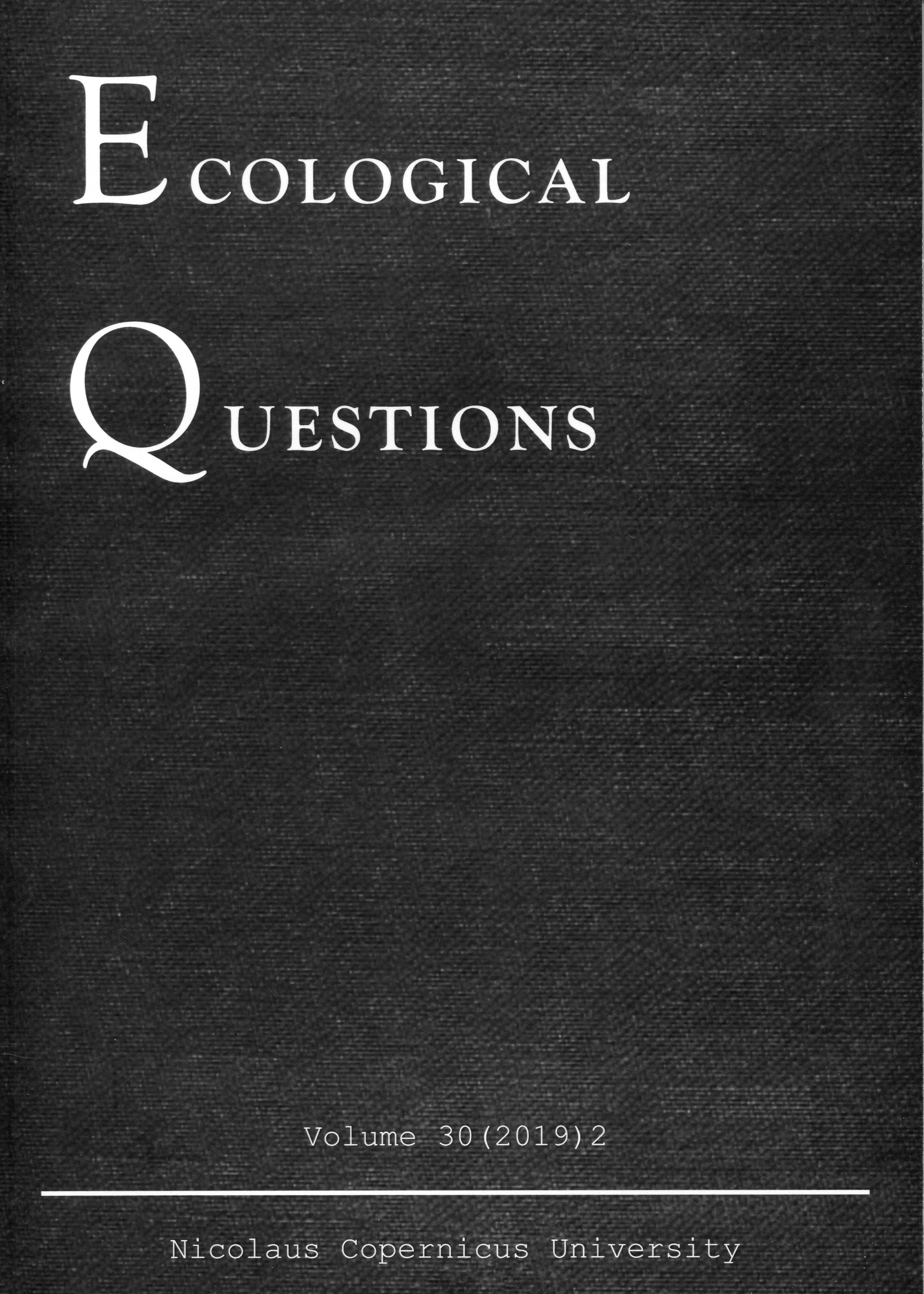Horticultural therapy as a tool of healing persons with disability on an example of Support Centre in Kownaty
DOI:
https://doi.org/10.12775/EQ.2019.013Keywords
garden, therapy, disability, disorders, greenery design, therapeutic centersAbstract
Nowadays, the interest in nature’s impact on our mental and physical health is getting more and more common worldwide. The nature is able to relax, gentles nerves, arouses positive emotions. Greenery is a basic and most valuable part of human lives, which accompanies people and also a priceless space both, near single-family houses and public spaces as well.
Scientific studies shows, that a contact with nature may approve social function, has an influence on our mood, physical health, mental condition, reduces stress and pressure. It gives us many benefits on mental, physical and intellectual ground. Horticultural therapy is a supportive element and such an effective method in healing many afflicions and rehabilitation proces.
In horticultural therapy it is possible to use tasteful values, which references to landscape’s charm, greenery composition and single plants, their flavor, colours and textures. Beneficent impact of plants is connected to incentives, which influence on people and to the large variety of activities related to the plants care. In this type of horticultural therapy, we must take into account all aspects connected to design – personalised by exact needs of user, adjusted to dysfunctions and possibilities of people, who takes a use of therapy in garden.
The present studies shows that guidelines to therapeutic garden design must result from many spatial and greenery analysises, assessment of posssibilities and limits of the place, the way of its actual use and strict cooperation between the gardener and therapist. We assumed that designer should participate very actively in the therapy of potential users in order to know the specification of desease
References
Adevi A.A. & Mårtensson F. 2013. Stress rehabilitation through garden therapy: The garden as a place in the recovery from stress. Urban Forestry & Urban Greening 12(2): 230-237.
Araźny A. & Smukała K., 2011, Ocena bodźcowości warunków termiczno-wilgotnościowych w Polsce w przekroju południkowym w okresie 1976–2005 [Evaluation of the stimulating effects of temperature and humidity in Poland in a meridional cross-section in the years 1976–2005]. Annales UMCS Lublin-Polonia Sec. B, LXVI: 77-90.
Boniek- Poprawa D., 2011, Zmienność elementów pogody a nagłe przyjęcia do szpitala. praca doktorska, Uniwersytet Medyczny, Poznań. (http://www.wbc.poznan.pl/Content/232744/index.pdf), [Accessed 16.07.2015].
Haller R. & Kramer L., 2006, Horticultural Therapy Methods. The Haworth Press, New York/London/Oxford.
Hortiterapia. Terapia ogrodnicza pomaga w leczeniu chorych dzieci, 2018, (https://www.zielonyogrodek.pl/terapia-ogrodnicza-pomaga-w-leczeniu-chorych-dzieci PAP - Nauka w Polsce), [Accessed 29.09. 2018].
Greenroofs, 2019, Indoor Living Walls. Psychological Therapy. Airborne Cleansing and My-Favorite Plants, LLC (http://www.greenroofs.com/content/Indoor-
Living-Walls-Psychological-Therapy-Airborne-Cleansing-and-My-Favorite Plants.htm#.W1Fo9NIzZnI), [Accessed 22.03.2019].
Kalina-Gagnelid A., Kosiacka-Beck E., Myszka-Stąpór I. & Skibinska M., 2016, Ogrody hortiterapeutyczne dla osob doroslych z autyzmem – zasady projektowania [Horticultural therapy gardens for adults with autism – guidelines for designing]. Annales UMCS, sectioEEE Horticultura XXVI (2): 13-25.
Kamioka H., Tsutani K., Yamada M., Park H., Okuizumi H., Honda T., Okada S., Park S.J. Kitayuguchi J., Abe T. Handa S., Mutoh Y., 2014, Effectiveness of horticultural therapy: a systematic review of randomized controlled trials. Compl. Ther. Med. 22: 930-943. (doi: 10.1016/j.ctim.2014.08.009).
Kolek Z., 2006, Oddziaływanie promieniowania optycznego na człowieka: korzystny wpływ i zagrożenia [The influence of optical radiation on human. Beneficial effects and health hazards]. Prace Instytutu Elektrotechniki 228: 269-281.
Konarska J., 2012, Terapeutyczna, psychologiczna i edukacyjna funkcja kontaktu z roślinami dzieci przewlekle chorych i niepełnosprawnych. Ogólnopolska Konferencja Hortiterapia - stan obecny i perspektywy rozwoju terapii ogrodniczych, Kraków. (http://www.hortiterapia.ur.krakow.pl/zasoby/57/hortiterapia_1_konferencja_2012.pdf), [Acceessed 28.11.2014].
Kyung H.K. & Sin A.P., 2018, Horticultural therapy program for middle-aged women’s depression, anxiety, and self-identify. Complementary Therapies in Medicine 39: 154-159. (https://doi.org/10.1016/j.ctim.2018.06.008).
Latkowska M.J., 2008, Hortiterapia-rehabilitacja i terapia przez pracę w ogrodzie [Hortitherapy – rehabilitation and therapy through work in the garden]. Zesz. Probl. Post. Nauk Roln. Wyd. SGGW, Warszawa 525: 229-235.
Latkowska M.J., 2013, Hortiterapia-zdrowie z ogrodu. Panacea 4(45): 28-30.
Nicieja S., 2011, Głodzący lekarz z Kosowa, postać wyjątkowa. Głos Szczeciński, 2011.08.12, Szczecin: 8–9. (ISSN 0137-9178), [Acceessed 26.03.2019].
Nowak J., 2008, Terapia ogrodnicza w krajach europejskich [Horticultural therapy in European countries]. Zesz. Probl. Post. Nauk Roln. Wyd. SGGW, Warszawa 525: 271-276.
Nowy projekt terapii chorych dzieci z wykorzystaniem roślin, 2011, (http://nauka.pap.pl/palio/html.run?_Instance=cms_nauka.pap.pl&_PageID=7&dep=276047&_CheckSum=1947256258 Serwis Naukowy PAP), [Accessed 29.09.2018].
Płoszaj–Witkowska B., 2014, Hortiterapia. Wydawnictwo Uniwersytetu Warmińsko-Mazurskiego, Olsztyn.
Płotka A., 2003, Zdrowy styl życia psychicznego. NeuroCentrum, Lublin.
Relf D., 1973, Horticulture: A therapeutic tool. Journal of Rehabilitation 39(1): 27-29. (http://www.hkath.org/Form/Scholar%20Article/Diana%20Relf/HORTICULTURE%20-%20A%20THERAPEUTIC%20TOOL.pdf), [Accessed 10.12.2014].
Sempik J., Aldridge J. & Becker S., 2003, Social and therapeutic horticulture: Evidence and messages from reaserch. Thrieve and CCFR, Loughborough: Media Services Loughborough University. (https://dspace.lboro.ac.uk/dspace-jspui/bitstream/2134/2928/1/Evidence6.pdf), [Accessed 11.11.2014].
Smrokowska-Reichmann A., 2006a, Ogród jako miejsce terapii, część II, [in:] Wspólne tematy 07-08: 49-54. Dom wydawniczo - reklamowy „Tematy”, Kraków.
Smrokowska-Reichmann A., 2006b, Ogród jako miejsce terapii część III, [in:] Wspólne tematy 09, s.42-47. Dom wydawniczo - reklamowy "Tematy", Kraków.
Smrokowska-Reichamnn A., 2013, Hortiterapia w teorii i praktyce, [in:]"Na temat"1/2013. Dom wydawniczo -Reklamowy "Tematy", Kraków.
Soga M., Gaston K.J. & Yamaura Y. 2017, Gardening is beneficial for health: A meta-analysis. Preventive Medicine Reports 5: 92-99. (doi.org/10.1016/j.pmedr.2016.11.007).
Stigsdotter U. & Grahn P., 2002, What Makes a Garden a Healing Garden? Journal of Therapeutic Horticulture 13: 60-69. American Horticultural Therapy Association. (http://www.protac.dk/Files/Filer/What_makes_a_garden_a_healing_garden_Stigsdotter_U __Grahn_P.pdf), [Accessed 21.11.2014].
Szewczyk-Taranek B. & Tomaka-Tomasik K., 2013, Hortiterapia w leczeniu osób objętych terapią długoterminową. (http://www.dps.pl/domy/index.php?rob=radar&dzial=7&art=1616), [Accessed 21.12.2014].
Taylor A., 2008, Horticulture in health: a brief history. (http://www.horticulturaltherapist.com/), [Accessed 23.11.2014].
Downloads
Published
How to Cite
Issue
Section
Stats
Number of views and downloads: 1403
Number of citations: 1



